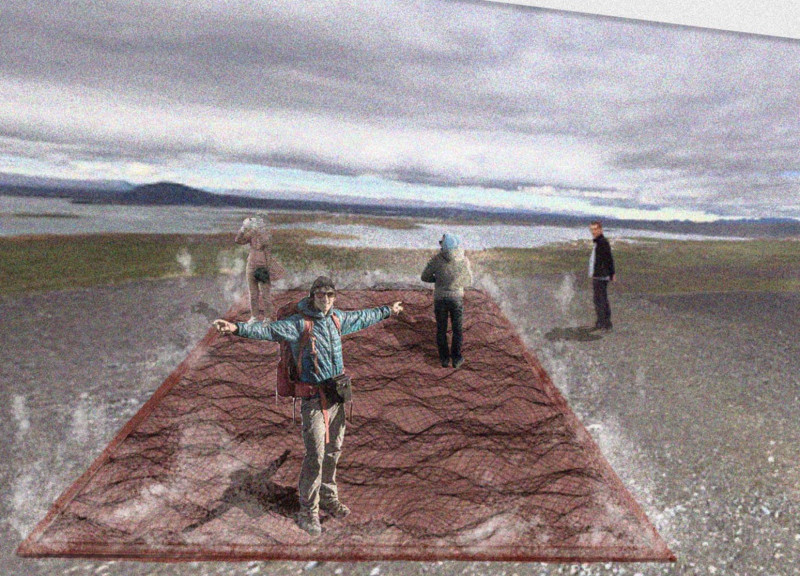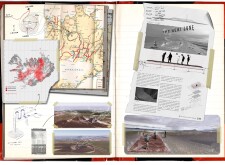5 key facts about this project
The architectural design of "The Heat Zone" emphasizes a harmonious relationship with its surroundings. The building's form is carefully crafted to echo the natural contours of the terrain, allowing it to visually integrate into the landscape rather than dominate it. With this design approach, the architects have prioritized the experience of visitors, providing them with unobstructed views of the majestic Vatnajökull glacier and the dramatic geological formations that define this part of Iceland. The use of large windows throughout the design serves to invite the beauty of the outdoors in, while also allowing natural light to fill the interior spaces, reducing reliance on artificial lighting.
The project features several key components that enhance its functionality and visitor experience. One of the most prominent elements is the network of visitor walkways that meander through the site. These pathways are not merely practical; they are designed to encourage exploration and interaction with the geothermal features of the landscape. Along these routes, visitors can engage with interpretive signage and interactive exhibits that provide insights into the science behind geothermal energy and its significance in the context of climate change and sustainability.
Observation decks strategically placed around the site offer elevated vantage points from which to appreciate the surrounding environment. These decks also function as gathering spaces where visitors can pause for reflection and share their experiences with others. The architectural design incorporates insulated enclosures, allowing for comfortable shelter without compromising the overall connection to the external environment. These spaces are intended to facilitate educational programs and workshops focused on geothermal energy and environmental stewardship.
Materiality plays a vital role in the success of "The Heat Zone." The architects have selected materials that not only reflect the local context but also promote sustainability. For instance, the use of locally sourced wood for cladding enhances the aesthetic appeal while ensuring reduced transportation emissions associated with material sourcing. Reinforced concrete is utilized to provide structural support, while glass components promote transparency and connection with the surroundings. The integration of geothermal pipes within the design exemplifies a practical application of the geothermal resources available, facilitating efficient heating of the building.
The project stands out due to its unique design approaches that fuse architecture with ecological awareness. By emphasizing educational experiences and interactive engagement with the geothermal landscape, "The Heat Zone" encourages visitors to develop a deeper appreciation for the natural resources that shape Iceland's environment. The thoughtful arrangement of spaces, alongside the careful selection of materials, reflects a commitment to sustainability that is increasingly critical in contemporary architecture.
This project is a testament to how architecture can play a significant role in environmental education and the promotion of sustainable practices. "The Heat Zone" exemplifies how architectural designs can effectively serve dual roles as functional spaces and educational tools. Readers interested in gaining a comprehensive understanding of this project are encouraged to explore its architectural plans, sections, and designs for an in-depth look at the thoughtful ideas and principles that guide its conception and execution. By doing so, one can appreciate the careful balance of form, function, and environmental integrity that defines this innovative architectural project.























